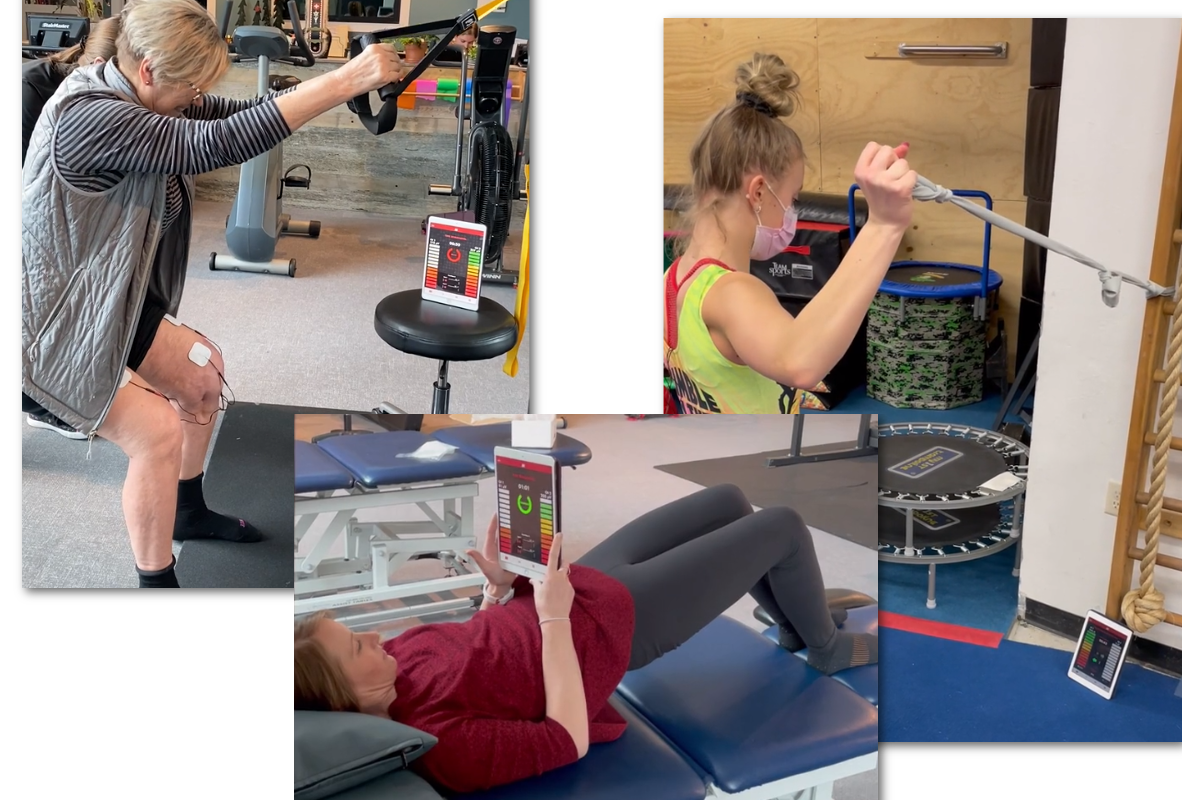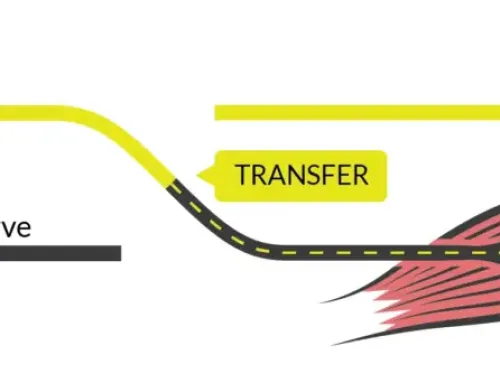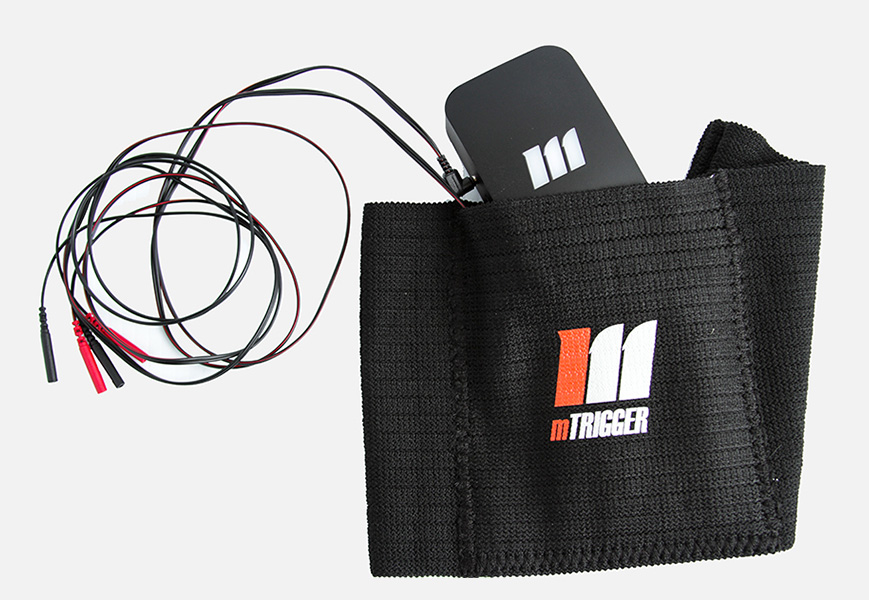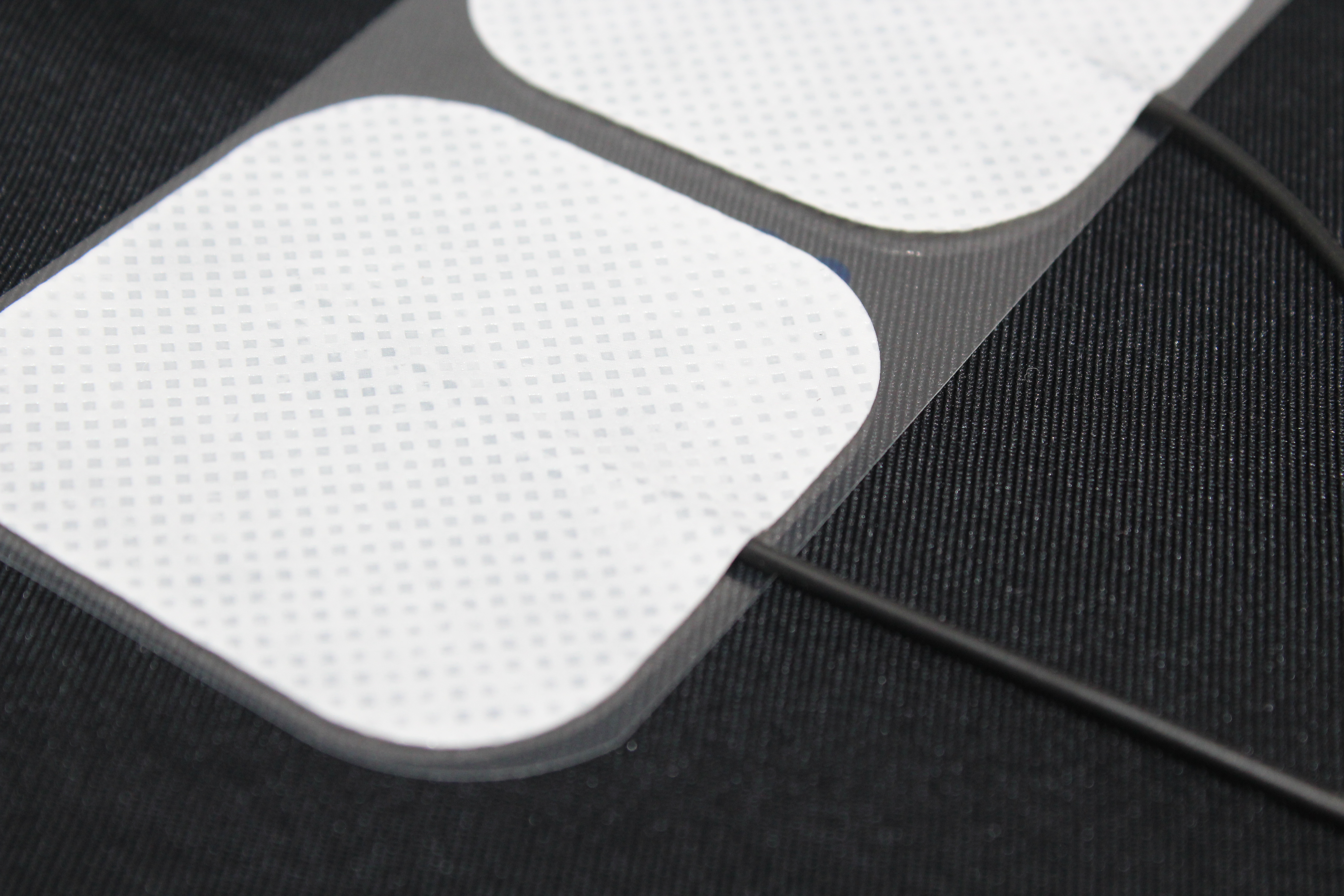Original author: Amanda Reeder
Over the last few months I’ve had the opportunity to utilize mTrigger in both an orthopedic and sports physical therapy setting. As an almost new grad, I’ve been exposed to all sorts of tools to utilize in my clinical practice toolbox; mTrigger has been invaluable in helping improve my patient’s performance and autonomy through biofeedback. The system is extremely easy to use, compact, and has made a significant difference in the way I treat patients. Let me take you through three different patients I had the opportunity to treat with mTrigger and how the system was integral in that patient’s (and my) success.
Case Example 1
Patient A was a 61-year-old female with hip pain who had undergone three hip replacements on the left hip. She was doing well overall but demonstrated a significant weight shift to the right during sit to stand transfers and squats. She didn’t have pain with these movements, so I hypothesized her offloading was due to a reinforced motor program developed while the hip was painful. The proper neuromuscular pathway had faded due to pain and injury, so she was no longer registering how to squat equally. During the first few treatment sessions, she made small improvements with tactile cueing, however, there was little carry over from session to session. It was difficult for the patient to really understand what we were trying to achieve during exercises. Even when using a mirror for visual biofeedback, she would utilize a trunk lateral side bend but never truly fix her weight shift. I decided to use mTrigger to give her a more concrete picture of where she was compensating. By using a dual channel set up on bilateral quads, mTrigger biofeedback allowed her to visually see her offloading pattern. In one session she was able to improve her squat form and self-modify when she shifted her weight. mTrigger paired with tactile cueing allowed her to see the difference in her squat and sit to stand form and correct herself. She was shocked to see how much she avoided loading the surgical leg and it sparked a very productive conversation about pain management, compensation patterns, and the importance of correcting her movement to reduce stress on the uninvolved hip.
**Notice how she really struggles to equally load the left side during a TRX squat, but improves over time
Case Example 2
Patient B has a history of seven(!) hip surgeries, most recently a procedure to rotate the pelvis to improve the coverage of her left hip joint. However, this contributed to significant strength deficits on the affected side. When she was performing a simple double leg hip bridge, my visual analysis of her form gave me no indication that she was not contributing equally with both sides. She demonstrated no hip drop or weight shift during the bridge, but when we added mTrigger to glute max bilaterally, it became very obvious to me as the clinician that she was utilizing her stronger side and abdominal muscles to perform what looked like a perfect bridge (oops!). The patient is active and has excellent awareness and strength in the non-affected muscles and therefore could perform this exercise with “proper looking form.” Nevertheless, she was not able to successfully utilize the muscles I wanted to target for this exercise. Having the mTrigger was a large advantage in this situation. It allowed me to dissect her muscle activation patterns as a clinician and the EMG biofeedback allowed her to see when she wasn’t utilizing the glute muscles on the affected side. Over subsequent training sessions it allowed her to get the most out of every rep and training session by visually ensuring she was utilizing the L glute properly. This was also an excellent way to monitor fatigue, once she was no longer consistently reaching the green on the left side it prompted her to take a break where she otherwise would have continued compensating with the uninvolved side not achieving our desired goal.
Case Example 3
The final patient, Patient C, is a young competitive gymnast rehabilitating from a right partial UCL (ulnar collateral ligament) tear. She was frequently doing her rehab in a hectic gymnastics’ gym and I was not always able to supervise her for every exercise due to the fast paced environment and the number of athletes who need treatment and attention. In post injury rehab, it is super important patients are activating/strengthening the muscles that have been injured, atrophied, or lack neuromuscular control. mTrigger allowed me to give autonomy to the gymnast while not compromising her care. Utilizing mTrigger on the infraspinatus (single channel) during 90/90 external rotation with a band allowed me to be confident that the athlete would not begin to compensate with stronger muscles as she fatigued. She was able to see what reps she was not performing correctly and adjust. This provided several benefits. I was able to treat multiple athletes at the same time without compromising their care and my athlete was able to train her strength and neuromuscular system with biofeedback. Over time and with practice, she was able to anticipate when a rep wasn’t going to light up the EMG meter before even seeing it. In a sport where proprioception and body awareness are so important, developing this knowledge of performance plays a key role. Mastering the exercise with external mTrigger visual biofeedback helped her to improve her internal biofeedback system and fine tune very intricate movement patterns. The games were also a large hit with young athletes’ and their naturally competitive spirit. This gymnast struggled to perform prone “Y”s with proper form, and the game functions gave her the opportunity to receive extra biofeedback with less frustration and more fun than “train mode” was giving her.
Summary
Utilizing mTrigger to stimulate the neuromuscular activation pathway and up-regulate the extrinsic biofeedback allowed my patients to quickly grasp form corrections, get the most out of each rep, monitor fatigue, and allowed for more autonomy during the treatment sessions without compromising care. mTrigger biofeedback is a tool I will continue using with future patients as it provides me with essential information as a clinician that I won’t have otherwise.
When to use biofeedback
|
Try playing games with biofeedback
|









Leave A Comment